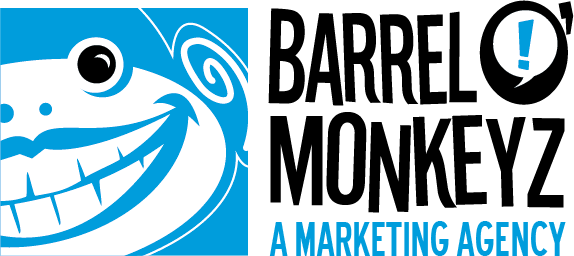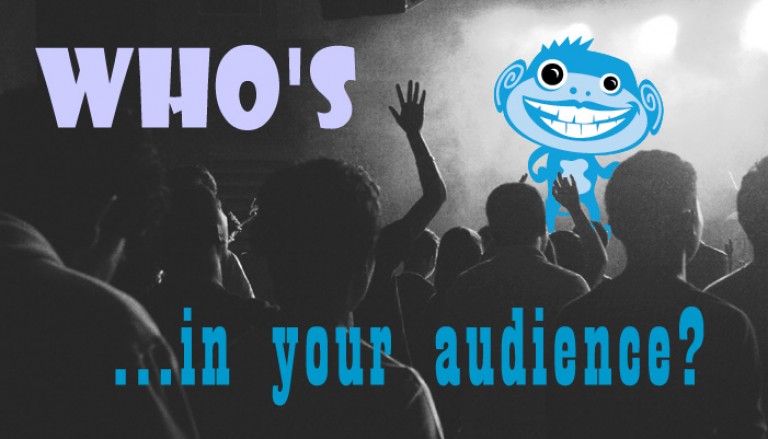When it comes to communications—ANY communications—whether it’s whispering sweet nothings to a potential love interest, or trying to engage potential customers to buy your product or service, if you don’t know WHO you’re talking to, how can you hope to make a successful connection?
Far too often I see business development and marketing types launch a barrage of “why my product/my brand is best for what ails you” type messages without really considering who they’re talking to and what the target “customer” really wants or needs.
Your Target Persona
At Barrel Of Monkeyz, we utilize the concept or target personas. If you have a product or a service to sell, we’ll actually craft a persona—a composite character who embodies all the attributes of your target client.
We’ll look at . . .
- Age
- Gender
- Profession/title
- Annual income
- Education level
- Marital status
- Where they live
- Where they vacation
- How they make purchase decisions
- Where they get their information
For example, if you’re an action sports brand selling gear and apparel to young sport enthusiasts, your target persona is likely to be a 25-30-year old male who’s gainfully employed and who is looking for some action and excitement in his life outside the office. You wouldn’t be targeting 45-year old women looking to balance work life and home life and send their kids to college (not that we don’t think the world of 45-year old women!).
The point is that your messages—in fact everything you do—by necessity, needs to connect with the person or persons your product or service is designed for, the person who will ultimately use your product or service, aka your target persona.
Likewise, the channels you use to connect to your target persona (where they get their information) need to make sense as well.
Channel Surfing
Chances are that most retirees don’t base their purchase decisions by watching an active lifestyle YouTube channel, nor are more youth-oriented social media platforms such as Tumblr likely to be their go-to platform for recommendations. They’re more likely to be looking toward traditional media—print, TV, radio advertising—good old word of mouth, and if they’re at all web savvy, possibly Facebook.
However, if twentysomethings are your target audience, they’re more likely to look to a wide range of online sources and more non-traditional channels to form their purchase decisions, ignoring print altogether.
Focus on the Sweet Spot
Your target persona and what it takes to reach and connect with that “person” informs all of your marketing activities (at least it should!). All advertising, PR, and communications should be designed to reach this demographic. This is not to say you’re excluding others (if someone outside your target demographic wants to buy your product or service, that’s fine), but your target persona represents the sweet spot for all of your marketing and branding efforts.
To the extent that your website is the hub around which most of your marketing activities revolve these days, it too must be geared toward your target persona.
- How does your target persona prefer to consume information—by reading (words), listening (audio), seeing (video)? How your website delivers content needs to align with how your target buyers expect and prefer to get their information.
- How does your target personal prefer to make a purchase—online, over the phone, by check? Chances are, most consumers want the instant satisfaction of buying their products online, with instant download or access to the extent possible. Don’t disappoint.
- What does your target persona expect to see when visiting your web site—corporate and conservative, or brash and fun? Serve web visitors a design experience that connects with their appetites, otherwise you wont capture their attention or their dollars.
- What platforms do your target personas use to access online information? Are they looking at your website on a smartphone, a table, or a desktop—or all of the above (it’s estimated that 60% of web views nowadays are made with mobile devices).
Who You’re Talking To…
I could go on, but by now you get the idea: a message, whether it’s visual or verbal, a combination of both, or even if it’s a full blown advertisement or a website, needs to have its intended recipients in mind when it’s crafted. Visualize these recipients. Think of them as people, with an age, a gender, and certain wants and needs and characteristics. Go as far as developing a persona (go ahead, try it—it will help). Then, when you develop a strategy for communicating your brand story—regardless of the medium—you will be able to make better, more well-informed decisions sure to resonate with your target buyers.
10 Steps to Better SEO
It may be easy to get online, but it’s not so easy to be found there. The Barrel O’Monkeyz “10 Steps to Better SEO” White Paper (PDF format) is full of ideas and resources you can use right away to begin developing your search engine strategy. Click here to download.
Paul June is King Monkey of BARREL O’MONKEYZ, a full-service digital media and marketing group specializing in more creativity, ideas, and fun for action sports marketing, sportswear marketing, sports product marketing, active lifestyle consumer products, health product marketing, and brands in San Diego and Southern California.

